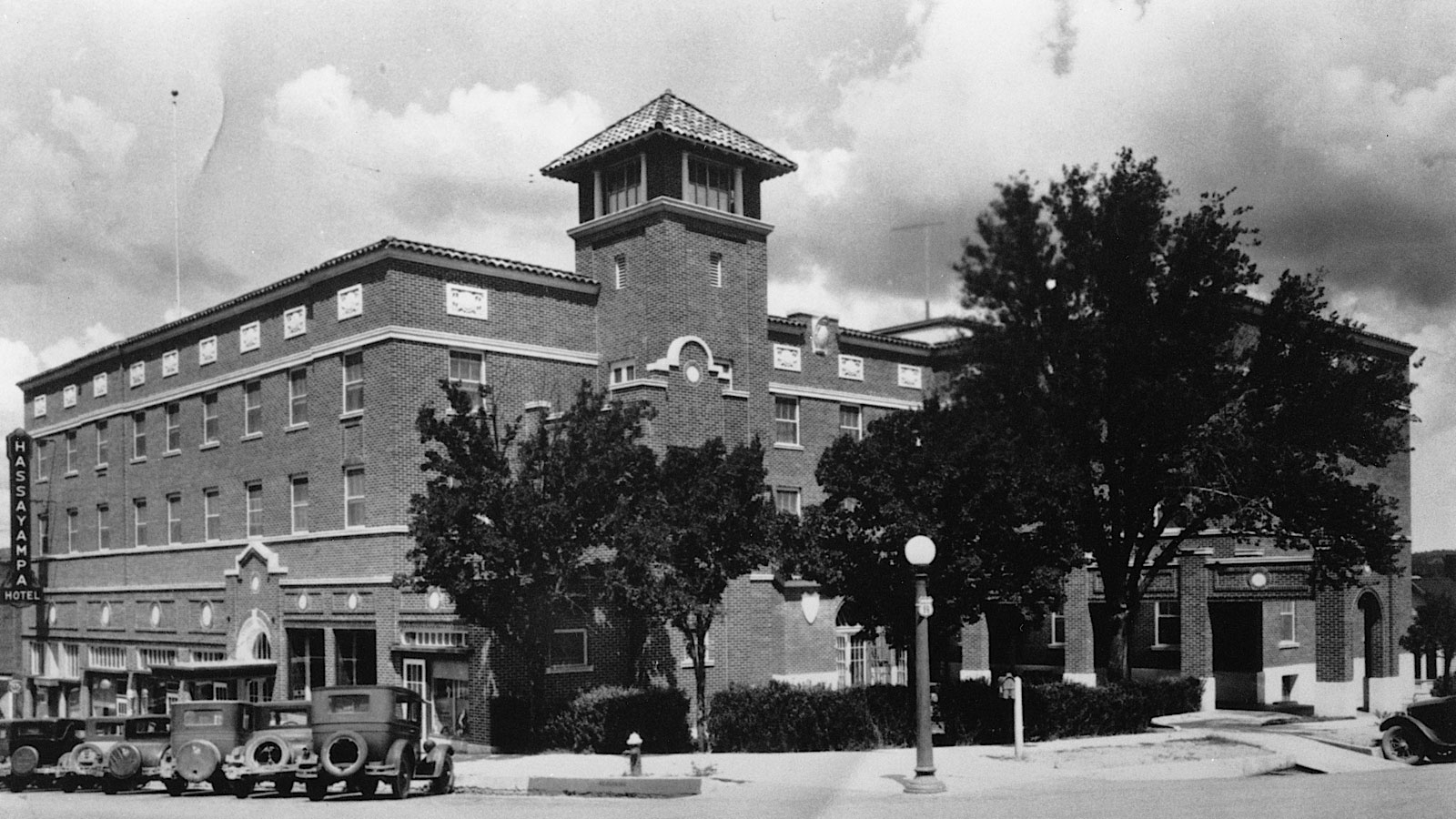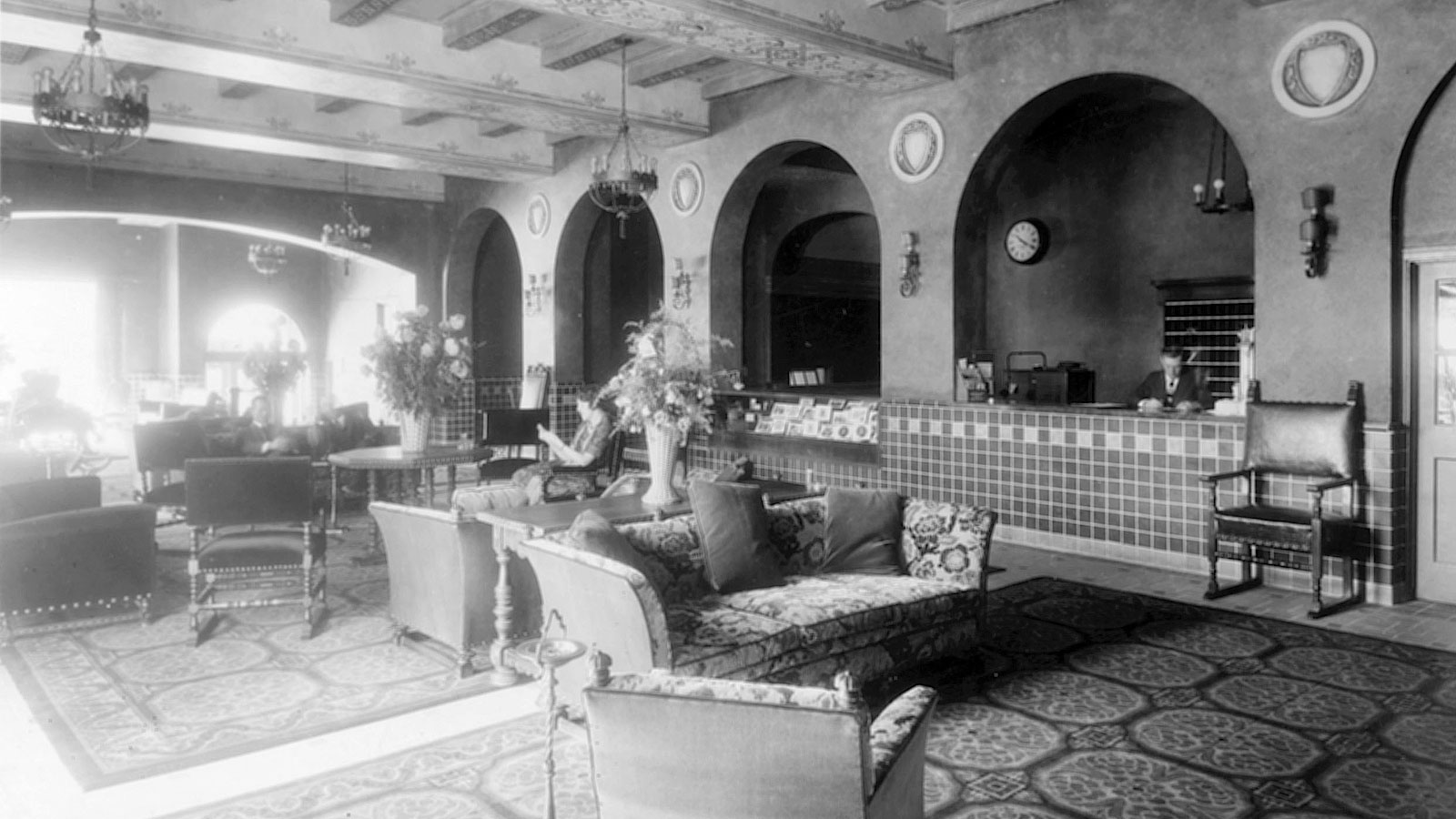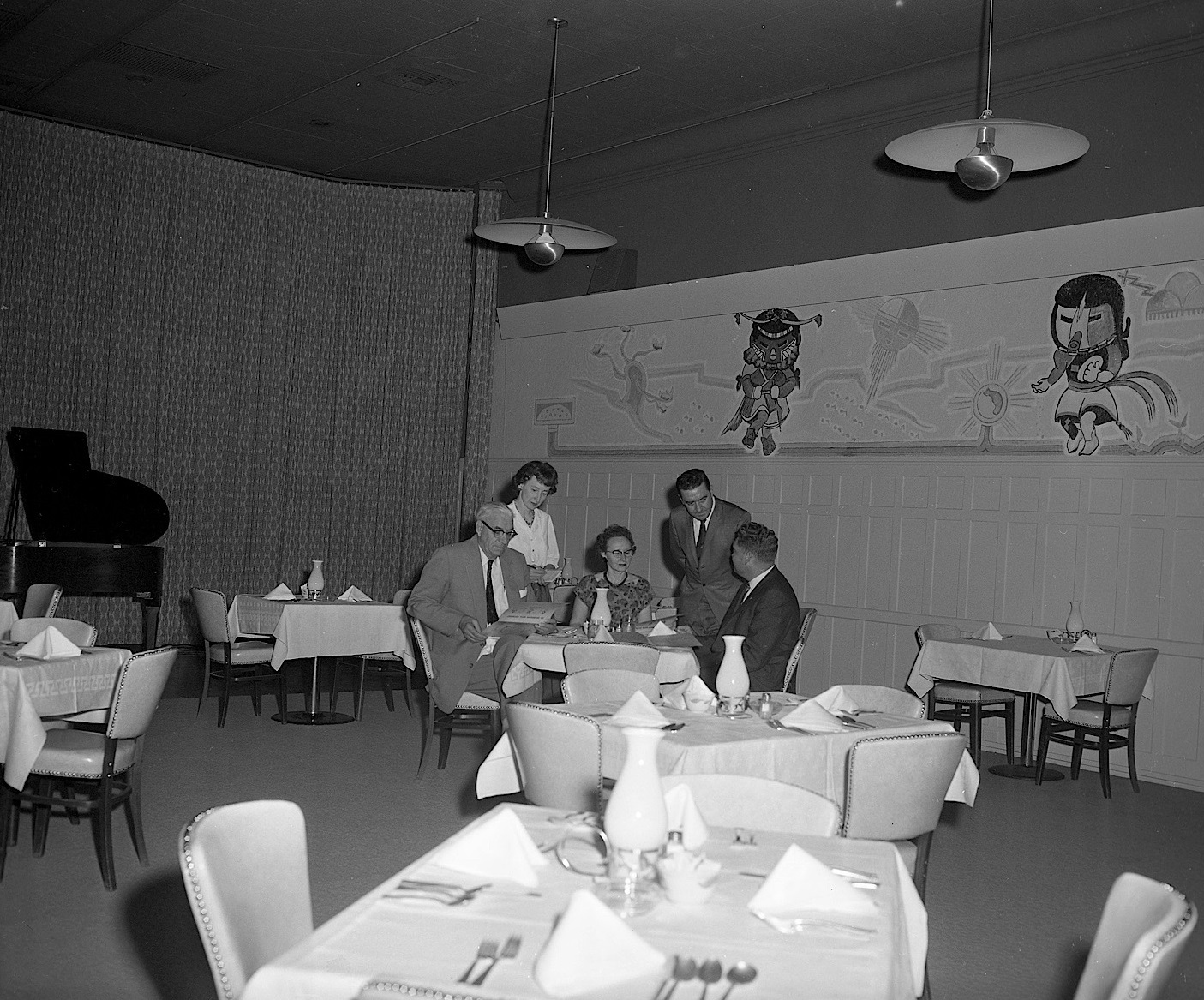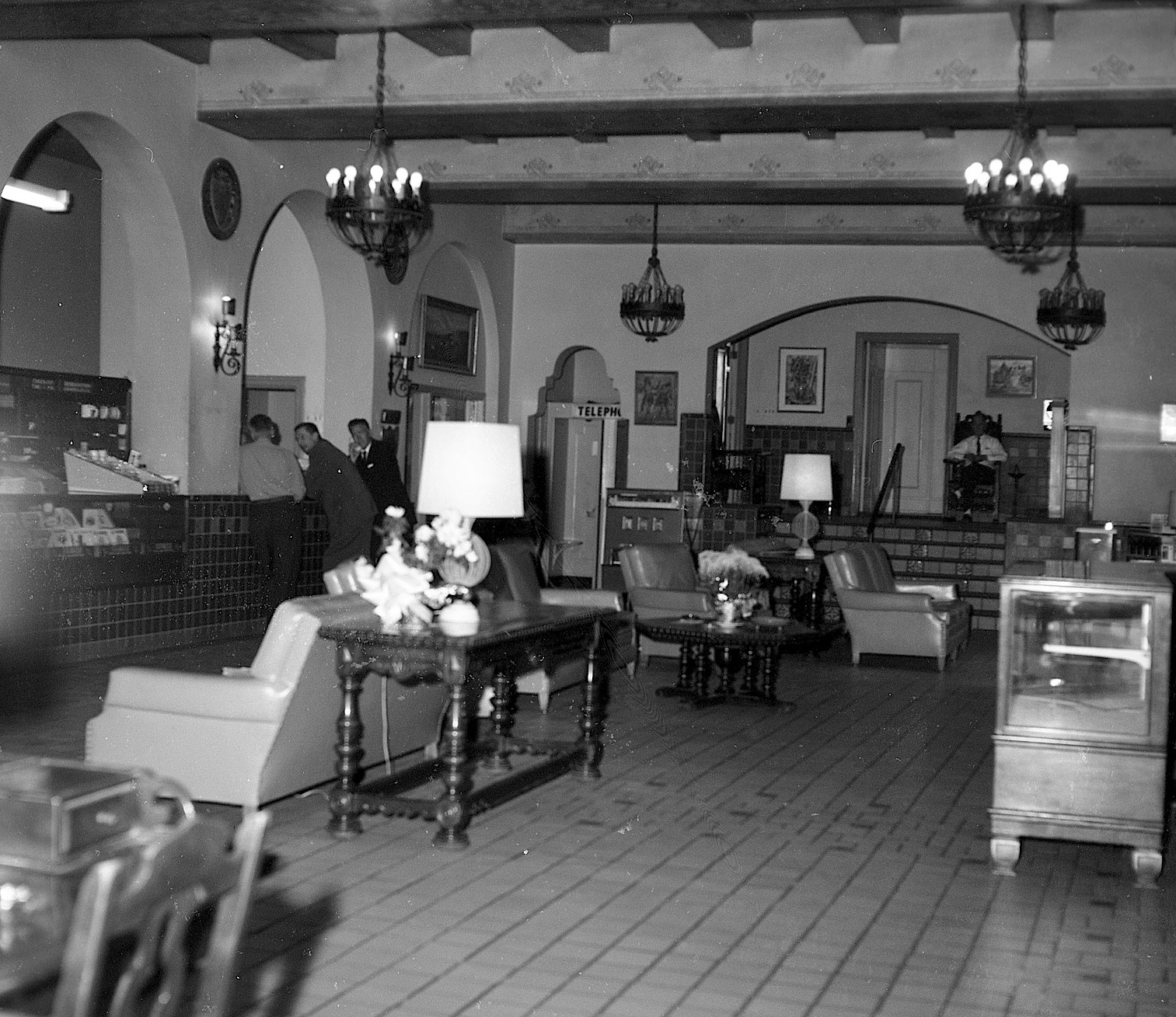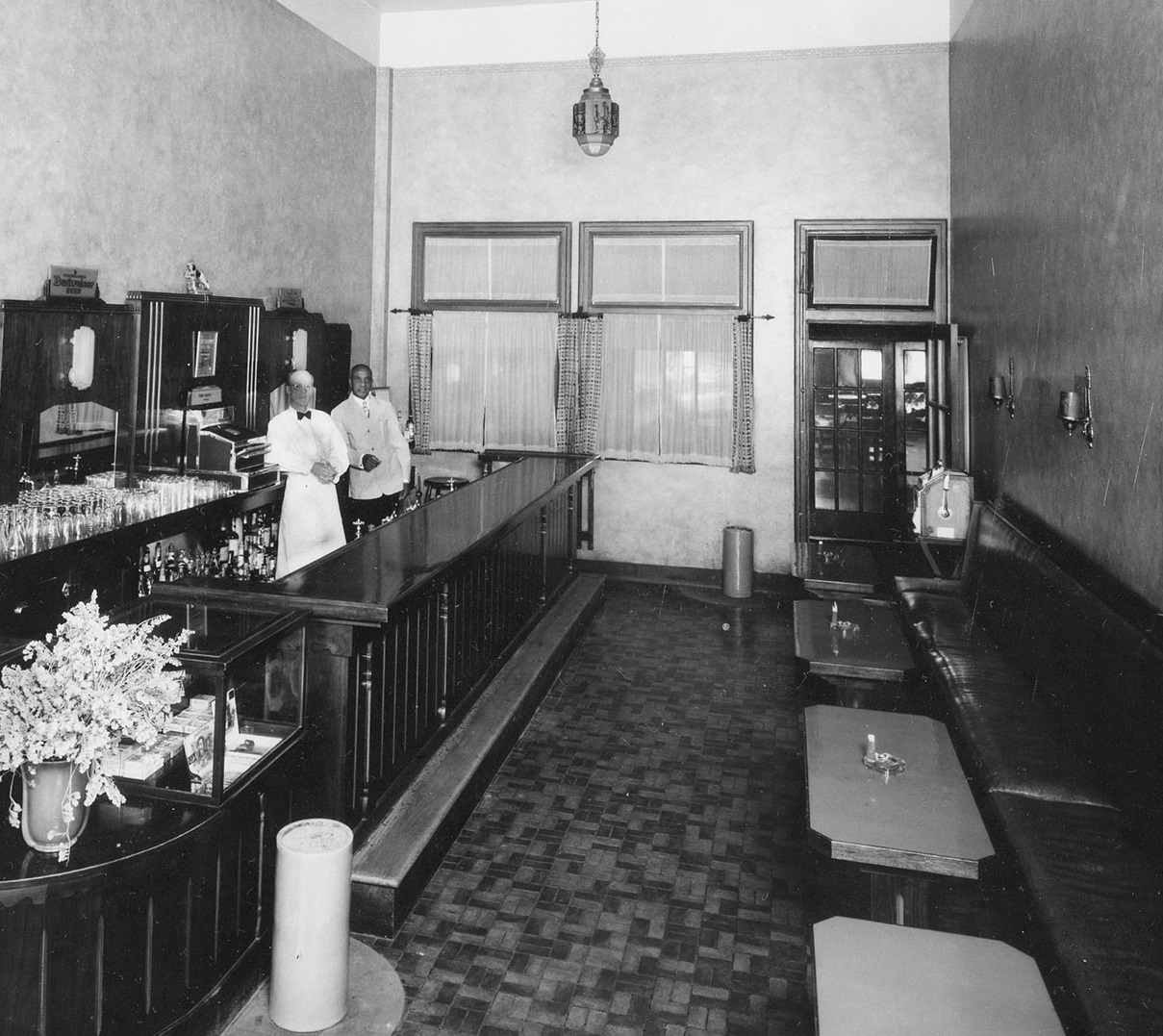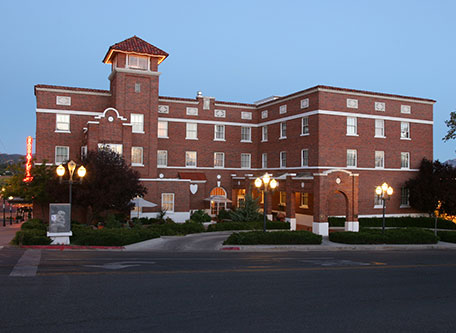Receive for Free - Discover & Explore eNewsletter monthly with advance notice of special offers, packages, and insider savings from 10% - 30% off Best Available Rates at selected hotels.
history
Discover Hassayampa Inn, which was designed by El Paso architect Henry Trost to become the cornerstone of downtown Prescott, Arizona.
Hassayampa Inn, a member of Historic Hotels of America since 1996, dates back to 1927.
VIEW TIMELINEListed on the National Register of Historic Places, the Hassayampa Inn has been a cherished member of Historic Hotels of America since 1996. For close to a century, this spectacular historic location has stood as celebrated local landmark in downtown Prescott, Arizona. The Hassayampa Inn debuted at a time when Prescott was rapidly becoming one of the state’s most exclusive vacation retreats. Families from Phoenix had started traveling north to Prescott in order to bask in its warm, tranquil environment. A few had even constructed quaint seasonal homes to enjoy during the summer months. As such, several prominent residents joined together and decided to capitalize on the city’s changing identity. Nevertheless, the townspeople realized that Prescott lacked a proper “modern” hotel that could entice more potential tourists to frequent the community. Several residents thus formed the “Hassayampa Hotel Co.” in 1924, and began raising the finances necessary to conduct such an endeavor. But the company was poorly managed and it quickly fell apart in a matter of months. Undeterred, members of the Prescott Kiwanis Club resurrected the project. Its associates successfully petitioned many of their neighbors to purchase multiple, one-dollar shares of the new hotel, ultimately obtaining a grand total of $150,000 in the process. But upon failing to secure secondary financing, it seemed like the project was done for good.
Fortunately, the Hassayampa Hotel Co. found a bank nearby that was capable of providing a loan in 1926. Construction then began a few months later, with the hotel company selecting a plot of land just a block east from Prescott’s historic Courthouse Plaza. To find an architectural firm suitable to design the building, the locals organized a design competition. After reviewing several entrants, a submission from the firm “Trost and Trost” of El Paso, Texas, soon stood out among all the rest. Choosing a brilliant blend of Spanish Colonial Revival and Italian Renaissance Revival styles, their plan called for a magnificent three-story brick structure situated atop an “L-shaped” foundation. The Hassayampa Hotel Co. formally approved the firm’s plans the following winter, with construction starting that February. Completed in just ten months, the beautiful Hassayampa Inn—then known as the “Hassayampa Hotel”—quickly became the finest facility of its kind in all of Arizona’s Central Highlands. Word of its magnificence quickly spread throughout America, attracting hundreds of patrons every year. Some of the world’s most prominent luminaries arrived at the hotel, such as the likes of D.H. Lawrence, Greta Garbo, Will Rogers, and Tom Mix. In later years, other noteworthy individuals to stay at the Hassayampa Inn have included Clark Gable, Steve McQueen, and Georgia O’Keeffe. Today, the Hassayampa Inn continues to operate as one of Arizona’s best retreats, offering the utmost in world-class hospitality.
-
About the Location +
The history of Prescott dates back to 1864, when the settlement was created to serve as the first capital for the then Territory of Arizona. (Arizona had been acquired in the aftermath of the Mexican-American War and would remain a territory until 1912.) In fact, Arizona’s first territorial governor, John Noble Goodwin, picked the site early during his tenure. At the same time, the territorial legislature designated the emerging settlement as the seat for Yavapai County—one of the state’s four original counties! Its inhabitants pitched several names for the nascent city, including “Audubon,” “Goodwin City” and Aztlan,” before finally selecting “Prescott.” The name paid homage to historian William Hickling Prescott, who wrote the popular The History of the Conquest of Mexico, as well as several other books about Spanish history. Prescott soon lost its status as the territorial capital briefly three years later, though, when the legislature relocated further south to Tucson. But the government returned in 1877, making the city the most dominant political force in Arizona for the better part of the next two decades.
Despite Prescott’s political importance, its local economy underwent rapid cycles of growth and decay. The worst depression happened in 1885, which closed several of the emerging businesses in Prescott. Fortunately, the city recovered from every slump, thanks in large part to the growth of a regional cattle industry that relied on Prescott for supplies. Its economic health was further solidified by the end of the 1880s, when the Arizona Central Railway opened a terminal within the city limits. The Santa Fe Railway soon assumed control over the spur, transforming it into a branch of its Santa Fe, Prescott and Phoenix Railroad. As such, Prescott had access to markets on both sides of the country, specifically the many seaports that were rapidly growing along the Pacific coastline. Many of the Old West’s most iconic figures also called Prescott home around the same time, including the famed lawman Virgil Earp, who worked as a constable and watchman. His friend—the legendary gunfighter Doc Holliday—also spent some time in the city, having arrived from Las Vegas, New Mexico, in 1879. He would specifically remain in Prescott for 11 months, often being spotted in the town’s notorious “Whiskey Row.”
In 1889, the territorial legislature voted a second time to transfer the capital, choosing Phoenix as the new destination. This time the move was permanent. Nevertheless, the railways and ranches had succeeded in transforming Prescott into one of Arizona’s most prosperous communities. Its thriving economic environment enabled its residents to install an electrical lighting plant, as well as a telephone switchboard system. Many beautiful manors dotted Prescott’s streets, too, which reflected all kinds of brilliantly ornate architectural styles like Greek Revival, Queen Anne, Gothic Revival, and Italianate. By the beginning of the 20th century, the city’s urban environment had even extended across the nearby Granite Creek, increasing its size exponentially. Much of this growth was briefly brought to an end in July of 1900, when a destructive fire swept through the community. Yet, the inferno proved to be a blessing in disguise, as the locals realized they had an opportunity to further modernize the city. Prescott soon had cement sidewalks and paved streets, as well as stunning new buildings that accommodated more businesses and people.
Then in 1914, the Yavapai Chamber of Commerce decided to promote Prescott and its surrounding environs as a holiday destination, specifically as a place to heal both the mind and body. The organization specifically targeted families living in Phoenix, some of whom had already started to build summer homes in the area for that exact reason. A lucrative tourism industry quickly developed over the next few decades, with many stunning hotels and inns opening throughout the city. The Hassayampa Inn—then known as the “Hassayampa Hotel”—was the greatest example of that transformation. Prescott’s economic renaissance came to an abrupt end in 1929, however, when the stock market crash ignited the Great Depression. The city subsequently suffered for years, until several federal programs—including the Public Works Administration, Civilian Conservation Corps, and the Works Progress Administration—introduced new jobs for the local workforce. Prescott finally recovered once the Second World War had concluded, in which a massive commercial and residential real estate boom commenced across Prescott. The city has since returned to being counted among Arizona’s most vibrant destinations. Not only is Prescott among the state’s leading vacation retreats, but it is also home to dozens of outstanding cultural attractions like the Sharlot Hall Museum, the Highlands Center for Natural History, and Prescott National Forest.
-
About the Architecture +
The architectural firm responsible for constructing the historic Hassayampa Inn was Trost and Trost of El Paso, Texas. Led by lead architect Henry Trost, the company received its commission through a design competition organized by the residents of Prescott. Trost and Trost itself was a prominent design firm in the American southwest. Although it had only opened in 1904, it still managed to play a significant role in the development of both modern New Mexico and Arizona. As was the case for most of their buildings, the design Trost and Trost created for the inn was fairly large and accented by all kinds of unique ornamentations. Its leading architects also selected a combination of Spanish Colonial Revival and Italian Renaissance Revival styles to design the Hassayampa Inn’s façade. Standing three stories tall, Trost and Trost built the red brick hotel upon an “L-shaped” foundation that extended along the northwest corner of Gurley and Marina Streets. The company also affixed a flat roof onto the top of the building, while several smaller roofs of slopping tile resided on the parapets. Furthermore, according to the U.S. Department of the Interior:
- “A molded cornice occur[ed] below the tiles at the top of the wall. The main (east) facade, setback from Marina Street by the entry court, [was] accentuated by an offset, four story tower. The tower project[ed] from the face of the wall and rais[ed] above the main roof line. It [was] topped with a mission tiled pyramidal roof set on four brick columns. A one story, flat roofed extension [ran] along a portion of this facade below the tower. Rising above the roof of this extension and adjacent to the tower [was] a two-story brick balcony with a curvilinear parapet on the east wall.”
Trost and Trost developed the Hassayampa Inn’s main entrance along Marina Street, in which a brick porte cochere led to a beautiful round-arched double-door. A series of glazed storefront bays were located along the first level of the exterior, interrupted only by the southern entrance into the hotel. That entryway was anchored by its own round-arched double doorway, set within a small pedimented frontispiece. Each one of the storefront bays contained a plan, circular medallion, as well as a detailed brick frame. Additional ornate plaster medallions also appeared elsewhere throughout the exterior, particularly near the top of the walls above the openings. And despite their discrete nature, the windows on the second and third stories were double-hung and placed uniformly throughout the building. Trost and Trost’s wonderful work continued inside the structure, as well, with all of the guestrooms and public spaces outfitted with the finest amenities and décor. Perhaps the company’s most noteworthy achievement in the interior was the main lobby, which contained such stunning features like ceramic-tiled wainscoting and beautifully painted beamed ceilings.
-
Famous Historic Events +
World's Oldest Rodeo (1888): The Hassayampa Inn has spent years hosting countless guests who have attended the Prescott Frontier Days, known throughout the county as the “World’s Oldest Rodeo.” While the Hassayampa Inn has been around since the late 1920s, the Prescott Frontier Days can trace its own lineage back some 40 years earlier. The very first “official” rodeo held in Prescot occurred on July 4, 1888, when a group of professional rodeo riders organized what they called a “cowboy tournament” with a number of local community leaders. To attract as much talent as possible, the organizers managed to offer a generous cash prize to the top contestants. Yet, many local ranchers and cowboys thought of the tournament as a way to proudly showcase their special abilities. The original rodeo grounds were also nothing spectacular, consisting of a tract of land known among locals as “Forbing Park.” Only a small rope separated the audience from the broncs in the arena. Eventually, a cowboy by the name of Juan Leivas won the contest, which was subsequently documented in the Arizona Journal-Miner to great acclaim.
Due to its surprising popularity, those in charge continued to arrange more rodeos over the coming years. Looking to make the annual competition more official, the organizers decided to operate the contest directly alongside the Yavapai County Fair. As such, they selected the Yavapai County Fairgrounds as the site of the competition, known today as the “Prescott Rodeo Grounds.” The rodeo was also given a formal name, too—the “Prescott Frontier Days.” But the word “rodeo” was not used at the time to define the sport. The word “rodeo”—Spanish for “to roundup”—was not even said in Prescott until 1924! Nevertheless, the newly minted Prescott Frontier Days continued to rise with incredible popularity. Soon enough, many celebrities were making the trip to Prescott to watch the rodeo, including the likes of Tom Mix and Will Rogers. The rodeo continued to operate, too, even as the rest of the Yavapai County Fair closed briefly due to the Great Depression and World War II. In fact, the rodeo’s facilities only continued to expand. Thanks in large part to the Works Progress Administration and the Civilian Conservation Corps, the Prescott Frontier Days saw the addition of the current grandstand, a stone “fishpond,” and two additional structures that are today called the “Pardee” and “Freeman” buildings.
The Prescott Frontier Days never lost its national repute in the immediate postwar years, growing to become one of the county’s most prestigious competitions. Thousands of spectators arrived every year to watch the event, swelling Prescott’s population to new heights. Purses even grew to amazing sums, often exceeding the price of $20,000! (For context, purses at the Prescot Frontier Days had only reached as high as $1,000 just a couple decades prior.) The rodeo also helped sustain the area’s historic ranching industry, giving farmers a specific market to sell their livestock. Illustrious luminaries continued to visit as well, including actor Steve McQueen in 1972. (McQueen even stayed inside the Hassayampa Inn during his trip!) Indeed, the legendary Hollywood star had specifically traveled to the rodeo grounds in order to star in the movie, Junior Bonner, which was actually about the Prescott Frontier Days. The rodeo’s prestige was further cemented in 1985, when the U.S. Patent Office approved its registration as the “'World's Oldest Rodeo.” Then in 2008, Prescott Frontier Days was formally induced into the Pro Rodeo Hall of Fame—one of just 16 rodeos to ever receive the honor. Today, the rodeo continues to be among Arizona’s greatest historical attractions, and still captivates countless visitors every year.
-
Famous Historic Guests +
Clark Gable, actor known for his roles in It Happened One Night, Mutiny on the Bounty, Gone with the Wind.
D.H. Lawrence, writer and poet known for such works like Sons and Lovers, Women in Love, and Lady Chatterley’s Lover.
Georgia O’Keeffe, artist regarded by many art historians as the “Mother of American modernism.”
Greta Garbo, actress known for her roles in Grand Hotel, Romance, and Anna Christie.
Steve McQueen, actor known for his roles in such movies like Bullitt, The Sand Pebbles, and The Great Escape.
Tom Mix, actor best remembered for his role in such films like The Miracle Rider, Just Tony, and The Great K & A Train Robbery.
Will Rogers, actor known for his roles in such films like Judge Priest, In Old Kentucky, and Steamboat Round the Bend.
-
Film, TV and Media Connections +
Junior Bonner (1972)
Only the Brave (2017)

























